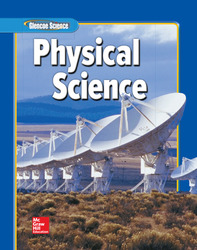1.
A) when a force acts on an object, its acceleration is in the same direction as the force B) when a force is applied on an object, there is an equal force applied by the object in the opposite direction C) an object will remain at rest or keep moving unless a force acts on it D) acceleration is calculated by dividing the force exerted on an object by the mass of the object 2.
A) Average velocity B) Speed C) Acceleration D) Displacement 3.
A) speed B) acceleration C) velocity D) rate 4.
A) multiplying total distance traveled by the total time B) multiplying the displacement by the total time spent C) dividing the displacement by the total time spent D) dividing total distance traveled by the total time 5.
A) direction of motion B) inertia C) force pair D) net force 6.
A) Mass B) Acceleration C) Gravity D) Inertia 7.
A) Instantaneous speed B) Velocity C) Acceleration D) Average speed 8.
A) acceleration B) velocity C) differential D) displacement 9.
A) lithosphere B) magnetosphere C) stratosphere D) core 10.
A) displacement B) average speed C) velocity D) average displacement 11.
A) 5.3 h B) 3.52 h C) 3.14 h D) 2.18 h 12.
A) 10 km B) 2.8 km/h C) 11 km D) 10.5 km 13.
A) 7.1 km north B) 3.7 km C) 3.7 km south D) 7.1 km south 14.
A) divide the distance traveled by the time needed to travel the distance B) divide the change in velocity by the time over which the change occurs C) subtract the time needed to travel the distance by the total distance traveled D) subtract final position from starting position 15.
A) motion B) acceleration C) velocity D) force 16.
A) position B) neutral point C) displacement D) velocity 17.
A) volume B) mass C) force D) position 18.
A) 2 km/h B) 4 km/h C) 2.67 km/h D) 8 km/h 19.
A) stopping your bike at an intersection B) riding your bike straight down the street at a constant speed C) riding your bike faster when you ride down a hill D) slowing your bike ride so you can make it up a hill 20.
A) liter B) meter C) gram D) mile














